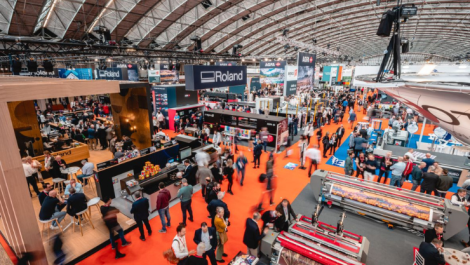The Tx500-1800B joins Mimaki’s family of digital textile inkjet printers
Mimaki has announced a new addition to its family of digital textile inkjet printers, the Tx500-1800B, which joins the company’s broad textile printing portfolio.
The Tx500-1800B delivers high speed, high quality digital printing on a wide range of textiles, including cotton, silk, hemp and rayon.
‘We continue to improve and expand our textile printing capabilities based on customer feedback,’ said Mike Horsten, general manager marketing EMEA. ‘With the Tx500-1800B, we have again raised the bar in terms of the cost, quality and flexibility metrics for high quality small lot printing of textiles, even when using stretchy fabrics.’
Key features of the Tx500-1800B includes a specially designed conveyor belt that feeds fabric without tension, enabling high quality printing on elastic materials, even with unattended operation. Print speeds are at 60 square meters per hour and 600 x 450 dpi.
Various ink types that support a wide range of materials to meet the diverse needs of the textile and apparel industries are available for the Tx500-1800B.
This includes reactive dye ink (Rc300), sublimation dye ink (Sb300), acid dye ink and pigment ink. Acid dye and pigment inks will be available in the near future and all the ink is available in 2-litre ink bottles for reduced ink costs.
The combination of speed and print quality is key to the Tx500-1800B and a variable dot function that delivers rich gradation without banding and accurate printing of fine lines gives added value in the final product for fashion design.
The new printer includes a number of features to aid ease of use in a production environment and an automatic process for cleaning and drying the conveyor belt between or during projects, which ensures that media is protected from staining or dampness.
‘We believe that the Tx500-1800B will speed up the gradually growing transition to digital printing in the worlds of textiles and apparel,’ Mr Horsten added. ‘Fashion designers and others in the industry will be able to produce vibrant small lot products on unique materials that were not readily available for digital printing in the past. This includes cotton, silk, hemp and rayon, all popular fabrics in the world of fashion design. Our dedication to eco-friendly printing is also demonstrated with this new textile printer, which uses less ink and water and results in less waste than other printing methods.’


